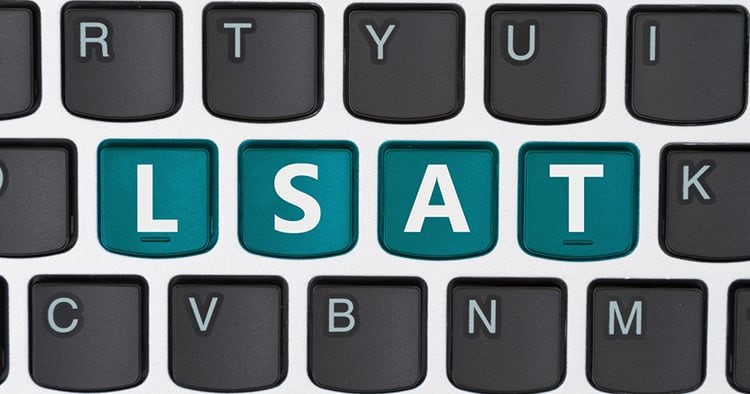Not sure what strategy to apply for your LSAT prep? Read along to find out more about the most effective technique to ace your LSAT- The Blind Review!
Blind Review LSAT: A Game-Changing LSAT Strategy

The Blind Review LSAT method is the most effective strategy for students to improve their LSAT score. In this guide, we will explore the benefits of the Blind Review method and provide practical tips for incorporating it into your LSAT study routine.
Exams and tests are an inevitable part of life, and while preparation is essential for success, using the right strategies can make a significant difference. LSAT-specific strategies, such as managing your time effectively and understanding how to approach each section of the exam, can help you feel more confident and reduce anxiety, ultimately improving your performance.
Blind Review is a powerful feedback mechanism that can help individuals improve their performance on exams and assessments. It involves reviewing and analyzing your work without looking at the answers or solutions beforehand, forcing you to think critically and identify your own mistakes.
So let’s unlock the power of Blind Review for LSAT success and get started!
What is the LSAT?
Well, the LSAT is a standardized test that law schools use to evaluate applicants.
It’s composed of four sections: Logical Reasoning, Analytical Reasoning (also known as the “Logic Games” section), Reading Comprehension, and an unscored Writing Sample.
Each section is designed to test different skills and abilities that are important for success in law school.
The Logical Reasoning section is composed of two parts, each containing approximately 24-26 questions. Here, they test your ability to analyze arguments and identify flaws in reasoning.
The Analytical Reasoning section, also known as the “Logic Games” section, contains approximately 22-24 questions. This section is designed to test the test-taker’s ability to understand and analyze complex rules and relationships and apply them to solve logic puzzles.
The Reading Comprehension section contains approximately 26-28 questions and is designed to test the test-taker’s ability to read and understand complex texts, analyze the arguments presented, and draw conclusions.
Finally, the LSAT Writing Sample is an unscored section that requires test-takers to write an essay in response to a given prompt. This will test your ability to communicate effectively and present a well-structured argument.
What is a Blind Review LSAT Technique?
How students normally study?
When it comes to preparing for the Law School Admission Test (LSAT), there are different approaches for an average student versus a high achiever. One technique that high achievers use is called the “blind review” technique.
For now, let’s explore how an average student and a high achiever can study for the LSAT and how a high achiever uses the blind review technique.
An average student tends to use high-quality LSAT prep materials, takes several practice tests, focuses on their weaknesses, never forgets to review their mistakes, stays motivated, and take care of themselves throughout the preparation process.
While these steps are important, an average student may not have the same level of dedication, discipline, or natural aptitude as a high achiever.
A high achiever should create a detailed study plan, use a variety of LSAT prep materials, analyze their mistakes, practice under timed conditions, seek out expert help, stay focused and disciplined, and stay positive and confident.
In addition to all this, high achievers often use the blind review technique.
The blind review technique involves reviewing practice tests without looking at the answers or explanations first. After completing a practice test under timed conditions, a high achiever will set the test aside for a day or two.
Then, they will come back to the test and go through each question again, this time without looking at the answers or explanations.
They will mark each question as “guessed” or “answered with confidence.”
Once they have reviewed each question, they will go back and check their answers.
If they got a question wrong or guessed, they will try to answer the question again without looking at the answer key or explanation.
This helps high achievers identify areas where they need more practice and understand their mistakes more deeply.
The blind review technique is a powerful tool for high achievers because it helps them understand their thought process and identify any mistakes, they may have made due to timing, stress, or other factors. It also helps them develop a deeper understanding of the material and build their confidence.
How can you use the blind review for your LSAT prep?
Follow these steps to a successful blind review to score the highest marks possible!
#1: Take a practice test
To get started with the blind review, you’ll need a practice test or section.
This will provide you with a set of questions to review during the blind review process. Make sure you time yourself as you normally would during the actual test.
This is the perfect time to simulate the actual LSAT test-taking experience. So, grab a timer and a pencil and get ready to put your skills to the test!
#2: Take a break
Once you’ve completed the test or section, take a break!
Don’t check your answers or review your notes just yet. Give yourself some time to recharge and come back to the test with fresh eyes.
#3: Review each question
When you’re ready to start a blind review, pull out your test and review each question one by one. Remember to approach each question as if it’s the first time you’re seeing it!
#4: Note your mistakes
As you go through each question, take note of any mistakes or patterns you notice.
This could include things like misreading the question, overlooking a critical piece of information, or making a calculation error. Write down any observations you make so that you can refer back to them later.
#5: Evaluate your thought process
Once you’ve gone through all the questions, take a step back and think about your thought process.
Were you confident in your answers? Did you second-guess yourself? Did you get tripped up on certain types of questions?
Think about what you could do differently next time!
#6: Adjust your study materials
Now that you’ve completed the blind review process use the insights you’ve gained to adjust your study materials.
Did you notice a pattern of mistakes in a certain area? Then focus your studies on that area!
Did you struggle with time management? Then you should practice with a timer!
Use what you’ve learned to tailor your approach to LSAT prep.
#7: Rinse and Repeat
Blind review isn’t a one-time thing!
Remember to incorporate it into your LSAT prep routine regularly to continue improving your skills and boosting your confidence.
It’s important to remember that the LSAT prep is a journey, and blind review is just one tool in your toolbox.
By following these steps, you can use a blind review to improve your LSAT scores and maximize the effectiveness of your study materials.
For further preparation, you could include reviewing specific concepts or types of questions, practicing with additional LSAT prep materials, or seeking help from a tutor or study group.
Remember, the goal of a blind review is to evaluate your thought processes and problem-solving strategies without being influenced by your previous attempts.
Why is the Blind Review LSAT so important?
Conclusion
So, there you have it!
The blind review technique is a game-changer for anyone looking to conquer the Law School Admission Test (LSAT), especially if you’re a high achiever looking to get that extra edge!
By reviewing practice tests without looking at the answers or explanations, test-takers can identify their thought process and pinpoint areas where they need more practice. This helps you understand your thought process and identify areas where you need more practice.
While the blind review technique may require more time and effort, it can ultimately lead to higher LSAT scores and a deeper understanding of the material.
And remember, the blind review technique is just one of the many effective strategies you can use to prepare for your LSAT!
So, go ahead and give the blind review a go!

FAQs
Blind review is a technique used by LSAT test-takers to improve their scores. It involves going back over a practice test or set of questions without looking at the answers or your previous work and analyzing your reasoning and thought process. The goal is to identify areas of weakness and gain a better understanding of the test-taking process.
Blind review allows test-takers to identify areas of weakness and gain a deeper understanding of the test-taking process. By analyzing their reasoning and thought process without the pressure of time or the distraction of knowing the correct answer, test-takers can improve their accuracy and efficiency on future tests.
It is recommended that test-takers use blind review after every practice test or set of questions. This allows for consistent self-evaluation and improvement over time.
Yes, blind review can be applied to other standardized tests such as the GRE, GMAT, and MCAT. The technique can help test-takers improve their scores by identifying areas of weakness and improving their test-taking strategies.
There is no set time limit for blind review. However, it is important to take the time to analyze your reasoning and thought process thoroughly. This may take longer than the time it took to complete the initial test or set of questions.


